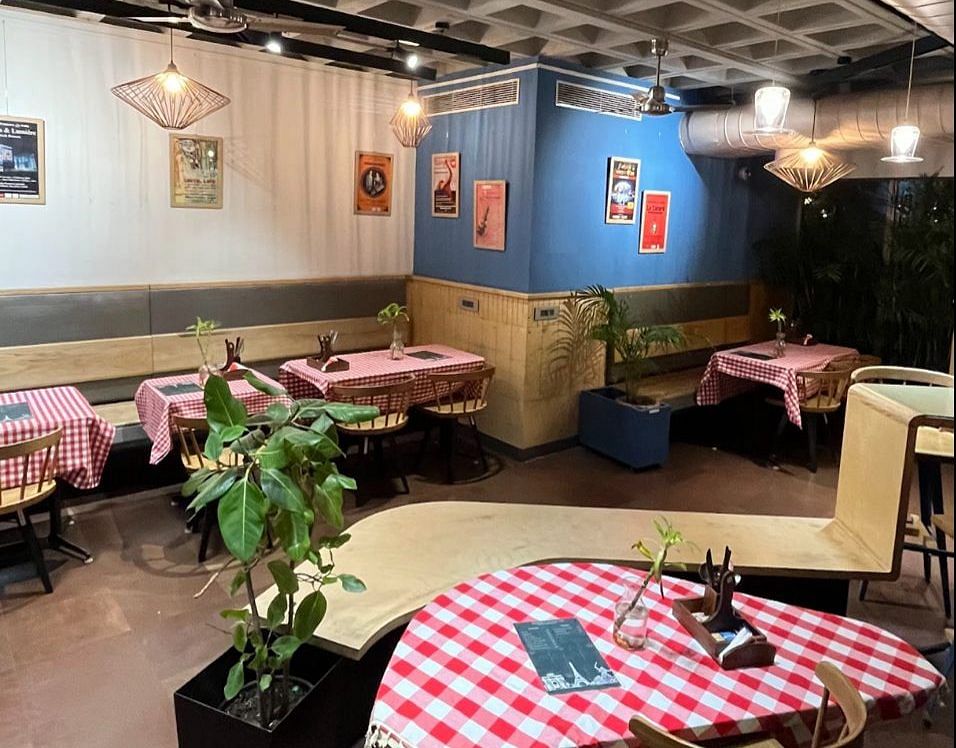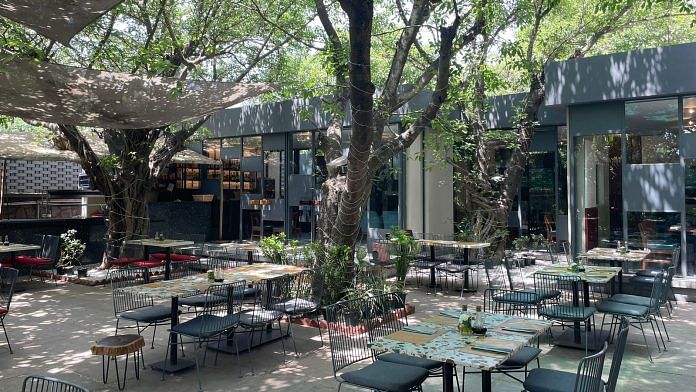New Delhi: Embassies in New Delhi aren’t just sites of diplomatic intrigue. They are emerging as popular hotspots for culture and cuisine too.
From tteokbokki (rice cakes with chilli sauce) at the Korean Cultural Centre India’s cafe, Dal-Grak to crêpes au fromage et aux champignons at the Bistro Français, embassies are flexing their soft power by appealing to Indians’ taste buds. Their promise of authenticity is another huge draw.
“Food is an integral part of culture and even the identity of people and nations. Sometimes cuisine becomes a defining feature in another country,” says Anil Trigunayat, former Indian ambassador to Bangladesh, Mongolia, US, and Russia.
According to Ajjampur Ghanashyam, former diplomat to Nigeria, “food is one of several instruments diplomats use while representing their motherland”.
And now, the Ethiopian Cultural Centre in Chanakyapuri is set to reopen its restaurant in August, which it had shut down during the Covid pandemic. With dishes like azifa (black lentils cooked with green chilli, garlic, onion) and begg tibs (sliced mutton fried with garlic, onion, fresh chilli), the cuisine appeals to the Indian palate.
By throwing open their doors and food to the public, embassies like South Korea, France, Ethiopia, and Italy are making the most of gastrodiplomacy.
“It is a universal language to foster understanding, create connections, and bridge differences. Throughout history, food has played a vital role in cultural exchange, diplomacy, and community building,” says Ankur Sood, executive chef, Diva, Italian Cultural Centre (ICC).
Sood mentions that food at Diva can offer diners knowledge about the regional food of Italy, which is beyond pasta and pizza.
“This is the power of food. In Delhi, you can savour the flavours of Italy,” he says.
Diva, Italian Culture Centre
With its vintage Italian decor, wooden seating, and lanterns hanging down from branches of trees, Diva is an ideal spot for lazy winter brunches and relaxed dinners. The restaurant is run by celebrity chef Ritu Dalmia.
“The colour palette and design of Diva will take you back to Italian interiors of the 1950s and early 1960s. I was very keen on sharing our aesthetics,” says Andrea Anastasio, director, ICC.
The restaurant has a menu that changes every season, depending on the seasonal and fresh produce available in the market. Antipasti, soups, salads, pastas, pizzas, paninis, zucchini flowers, and more offer a taste of Italy — from Sorrento to Rome. Meatier dishes like the rib-sticking polpette di salsiccia e tagliata, salsa di pomodoro (sausage & tenderloin meatballs in tomato sauce) are tempered with lighter ones like gazpacho di peperoni rossi con crumble di focaccia (red pepper gazpacho with focaccia crumble).
Complementing the culinary delights is a selection of Italian wines and cocktails, transporting the customers to the streets of Rome and Naples.
“To have an Indian chef who has been trained in Italy showcases cultural diplomacy. We not only appreciate the kind of attention she has for ingredients but also her understanding of the complexity of Italian cuisine,” says Anastasio about Dalmia’s ability to appeal to Indian diners without compromising on authenticity.
Diva imports ingredients like pasta, rice (for risotto), olive oil, and a certain variety of cheeses from Italy. However, for vegetables, meat, fish, and legumes, it turns to local farmers and vendors.
Renowned politicians, artists and authors are often spotted at the restaurant.
But the guest list isn’t restricted to famous personalities. Local residents can also take membership at the ICC with an annual fee of Rs 7,000. The membership grants them access not just to Diva but also to a vibrant community that shares a love for all things Italian and cultural events.
Also read: A metro coach is now Noida’s buzziest restaurant. And it’s not about quick, cheap snacks
Dalgrak, Korean Cultural Centre
There’s always a hum of young people outside the Korean Cultural Centre. They tend to be K-drama and K-pop fans, who have fuelled a new fad of Korean food as well.
Delhi’s growing appetite for authentic Korean flavours, fueled by travel experiences, TV shows, and social media trends has one solution – Dalgrak.
Sporting a minimalist ambience with muted tones and wooden accents, Dalgrak exudes a subtle charm reminiscent of traditional Korean cafes. The cotton-printed curtains fluttering at the windows is a deliberate nod to Korean households. Paintings of traditional utensils like Korean millstone and sujeo hang on the walls.
Despite its Korean roots, the cafe sees mostly Indian customers who can’t get enough of kimbap (Korean seaweed rice roll filled with a variety of delicious fillings), tteokbokki, bibimbap (rice mixed with egg and assorted vegetables), japchae (stir-fried glass noodles and vegetables), and white radish pickle (available in multiple varieties).
Dalgrak’s director Sumi Woo emphasises the role of food as a cultural bridge, offering not just delectable dishes but also cultural experiences.
“Ninety percent of our customers are Indians. To promote the fusion of Indian and Korean culinary traditions, we host gujiya-making classes during Holi and kimchi-making sessions in November,” says Woo. Behind the scenes as well, it’s Indian chefs that replicate these traditional dishes under Woo’s guidance—another form of cross-cultural exchange.
Also read: South Korean Do Nothing competition counters hustle culture. But why turn laziness into sport?
Bistro Français, Alliance Française de Delhi
The restaurant within the Alliance Française de Delhi (an Indo-French Cultural Centre) serves dual roles. By day, starting at 8 am, it operates as a cafeteria serving wraps, sandwiches, burgers, and more. But at 5 pm, red and white chequered tablecloths are unfurled, the collage cafe vibe is muted, and the space is transformed into a casual dining bistro.

“Both the set-ups give you a glimpse of France,” says Stephane Amalir, director, Alliance Française de Delhi. It’s not fine dining as much as it is a peek into local cuisine.
Representing Normandy is a classic French onion soup (caramelised onion in meat stock and white wine, topped with English cheddar). Marseille’s poulet à la tapenade (herbed grilled chicken breast stuffed with olive tapenade on mashed potatoes) and crêpes au fromage et aux champignons (savoury pancakes with mushrooms, béchamel, and cheddar) from Brittany are crowd-pleasers. Ratatouille (a stew of zucchini, peppers, tomatoes, and eggplant seasoned with herbs) from Nice, and confit de canard (slow-cooked duck in its fat, served with lentil ragout) from Gascony are all part of the menu.
“We wanted to feature dishes that are recognisable to both French natives and those knowledgeable about French cuisine. However, we adapted the menu based on ingredient availability in India, using only local produce,” says Amalir.
Chef Mikhil Pahwa and his wife, Jasmine Baweja, a patisserie chef, have been running the cafeteria for two years. But the menu was introduced a year ago after an eight-month testing phase. Mikhil recalls the challenges in perfecting their recipes to meet French standards.
“I remember in the first few tastings, the director said, ‘It’s tasty but not French,’” Mikhil says.
During the day, they offer the Too Mikkii Tapas menu, a restaurant chain run by the couple in West Delhi, while in the evening, their exclusive French menu takes centre stage.
“Our aim was to show that French cuisine extends far beyond Paris and croissants,” Jasmine adds.
(Edited by Humra Laeeq)



